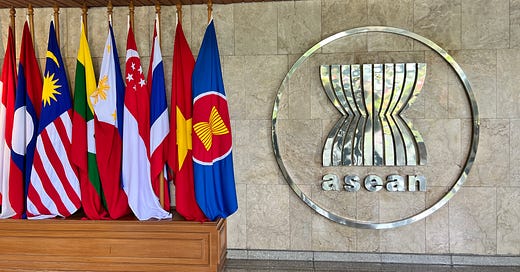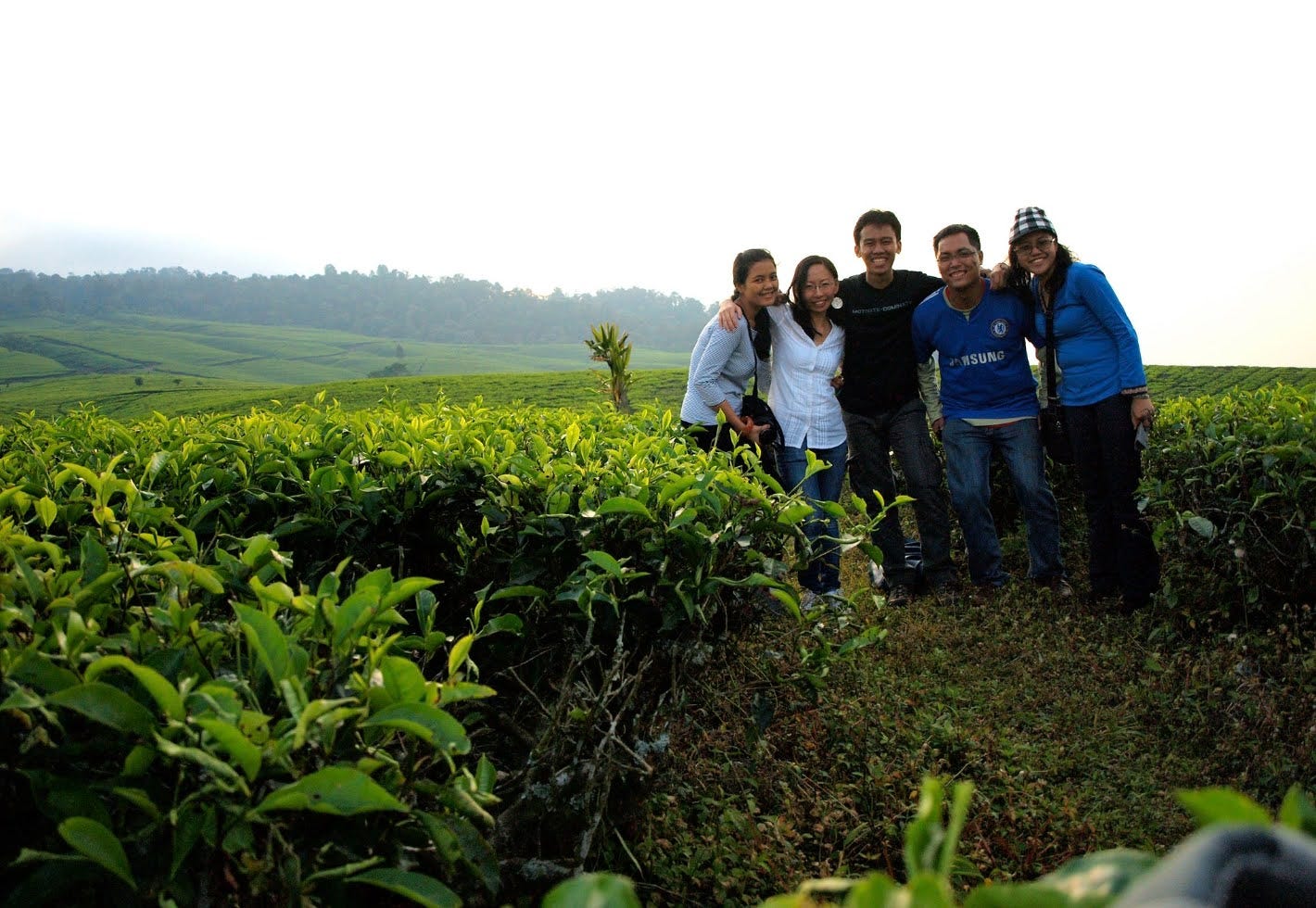See Instagram | See LinkedIn | See previous posts
We seem to be living in an age with deep aversion to depth - one that embraces swift swipe through of social media posts, texting instead of writing. But thumbs up or smiley emojis can only take us so far.
Entrepreneur Sahil Bloom recently said that there are 3 types of people in our lives:
Leaves surround us in good times but disappear as winter comes;
Branches are more stable than leaves but break when we try to stand or rely on them;
Roots are timeless and undisturbed by the changing seasons.
I uproot my life with frequent relocations so sustaining friendships has not been easy. As I face life uncertainties plus my remote work in the recent years, I have came to realize that deep in-person relationships are important, especially in the local community where I live in.
While all I need is a handful of close friends, residing in Japan and not yet knowing the local language has made this quest a tad more challenging.
Roots are the real deal whom we can count on. So who are the people who will sit in the mud with me through thick and thin? How can I become roots for others?
How do we sustain friendships over time and across geographical distance? Zooming out to a broader lens - What are the roots that ASEAN can rely upon with its shifting geopolitical landscapes, leadership transitions, and tides of change?
Friendship
An old friend from Indonesia and his family were in town recently. I met W in New York City the Summer of 2010. We were in the United Nations (UN) interns cohort. Also as part of the UN Interns Welfare Committee, we advocated against unpaid internship (after so many years, some interns do get paid now depending on the UN agencies).
Given my frequent move, W is one of the handful friends whom I managed to stay in contact until today. We have been able to meet each other in NYC to Jakarta, and now in Kyoto despite losing touch over the years while I was US-based.
Like me, W has been in the international development field with intersecting interest in sustainability and climate change. But career is just a part of the equation in his life.
He breathes adventures and lives a life of no-regrets. Often losing himself in hikes, runs and marathons, mountain biking, and various extreme sports - collecting medals for 40-65K races around the world. A true modern knowledge worker athlete indeed.
While we both have big ambitions in our younger days, we now talked about things that matter in this season of our life.
Importance of wellbeing and finding hobbies. Embracing the fact that life is not linear. Humans are not merely work machines. The journey matters. So are meaningful experiences. And we can make a conscious decision to live a great life based on our self-defined metrics.
Exploring Jayagiri Tea Plantation, West Java (2011). Friends from across Malaysia, Myanmar, Indonesia.
Weathering the seasons
Times have certainly changed since when I interned for the UN in 2010.
All eyes are now in Southeast Asia amidst the US-China tussle. Indonesia - where W is from - is the largest country in Southeast Asia and the only Southeast Asia country in the G20. In 2022, G20 Summit was held in Bali. In 2023, Indonesia held the chairmanship of ASEAN. I visited Jakarta for work three times just last year.
On the bad and ugly, we now talk about seasons in terms of air pollution season, heatwaves, flooding. The weather has become much more intensified and unpredictable.
The weather in Southeast Asia is no longer distinct with just dry and rainy seasons. We see headlines about record heat temperatures prompting school closures, sparking fires, and increasing hospitalizations. As well as unsustainable cranking up of the air conditioning leading to farther global warming.
Here in Kyoto, just in the course of a week, I have been confusing my wardrobe. Flip flopping between wearing short sleeves for one day, to donning sweater and a scarf the very next day. From +10 Celcius higher to -3 Celcius lower than average daily temperature just in a matter of a day.
Air pollution season
Seeing the way my Indonesian friends dote on their daughter during this trip reminds me of how much our love is to our children as parents. Wanting only the best for our young ones - including a reliably safe, clean, healthy, sustainable environment.
We were commenting on how blue and clear the sky in Kyoto is compared to how synonymous Jakarta has been with air pollution (fondly known as haze). Long-standing transboundary issues such as air pollution have been a nuisance in Southeast Asia for decades.
Over the years, I have advocated with many and written extensively on the air pollution-early childhood linkage. While there have been policy promises and promising initiatives on the ground, sadly the issue at large remains.
But I remain hell-bent on making change where I can. Curious how change-making happens, especially at the individual and community levels, rather than solely via the policy level.
Raising Our Voices as Mothers: Our climate, our children's future (Capita, January 2023)
Tiny Lungs, Hefty Price: Air pollution's unequal burden on young children (The Straits Times, Singapore, June 2023)
Air Pollution in Early Childhood Advocacy Brief - 10 pages (Vital Strategies & ARNEC, November 2023)
Air Pollution and Early Childhood Development in Asia-Pacific (ARNEC Connections, December 2019)
Visiting the ASEAN Secretariat in Jakarta (2023)
Roots of ASEAN are its people
People are the roots that our region is dependent upon - timeless and undisturbed by the changing seasons.
Growing up, I often aspire to study and live abroad in a Western country. With luck, I have been able to live up to my dream. So did W who also studied in the USA. Since then, we have returned and remained in Asia.
We talked about the tidal change that we now see, with a more positive youth outlook about Asia - a younger generation more proud of the ASEAN identity than ever.
A generation more comfortable with staying put in the region, one with a stronger connection with their regional communities.
Asia alone has over 400 UNESCO World Heritage sites - a continent with the largest number of such sites globally. Preservation of the past not only fuels creativity, it also deepens our collective societal value as we look towards the future on what it means to be human amidst massive forces ranging from aging society, climate change, to AI.
ASEAN countries share geographical closeness interconnected by land and maritime borders and is undergoing rapid infrastructure growth to spur sustainable economic recovery. Just within Indonesia alone, we see China’s investment in the WHOOSH high speed rail, and Japan’s involvement in the extension of Jakarta’s MRT subway system.
ASEAN countries are well connected by friendships, connections, and collaborations at the people to people level, weathering through changes in political leaders and policies. At the center of our region is its incredibly diverse and vibrant food culture, bringing us all together. Our food reflects our past influences with traders, immigrants, colonial powers - evident in dishes and drinks such as teh tarik1 as I’ve written in my earlier post (see Tea x Culture).
It gives me much hope to feel the energy of the people in my region. And our rich cultural and historical heritage collectively can certainly be a catalyst to drive positive change. I wonder where W and I will meet in person next. Perhaps with our families somewhere in this region that we so love!
This post is written on 13 May 2024 - 立夏:蚯蚓出 Beginning of Summer, 7th solar term (Based on Japan’s traditional calendar of 72 micro seasons)
See links to previous posts
Did you know that teh tarik is a fusion of cultural customs in Malaysia? From Chinese’ introduction of black tea (1830s), South Indian’s craft of pulling tea (after 1850), to introduction of milk and sugar by the British colony. See BBC’s feature on teh tarik.





